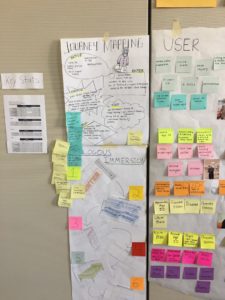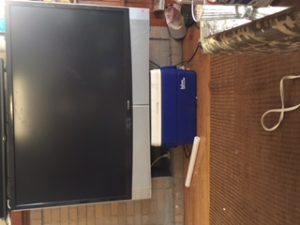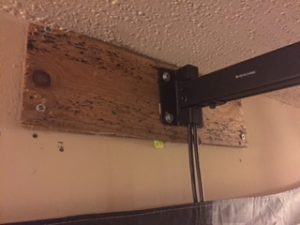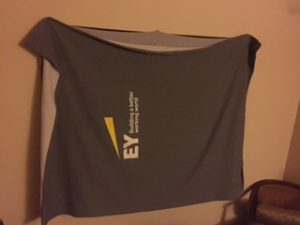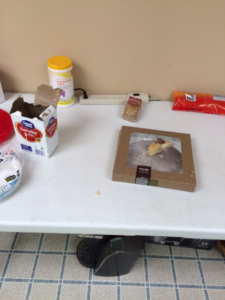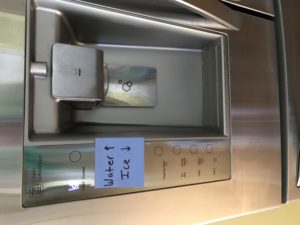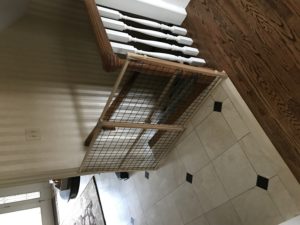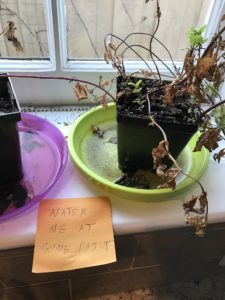1. Expert Interview (Mr. T)
Date: 03/02/2017
Type: Expert Interview
Location: BGCA Gym
Team Participants: Sarah, Jake, Jordan
User Characteristics:
- Approximately 27 years old
- African American
- Used to be a volunteer, now the athletic director
- Been involved in BGCA in some way for 10 years
- Has ideas for more variety in payment plans
- Puts emphasis on importance of members having a ride home
- Look for what the kids want and create a place that has all those things
Memorable Quotes:
- “We need to offer more open gym time for older kids because some don’t think they can come after they’re done with their sports at their high schools”
- “We could get kids interested with just one flyer that says we have Wifi, a gym to play basketball and an XBOX”
- “A lot of these kids would come more often if they could pay per visit instead of the $50 all at once and risk not getting their money’s worth.”
Top 3 Learnings:
- T sees a lot of untapped potential in terms of teen members for the club.
- There are many teens that love to just come into the gym and shoot around/play pick up games.
- There is focus on getting the kids to the club, but there is also a big need to get the kids home at night.
Key Insights:
- There are passionate employees and volunteers throughout BGCA
- Employees/staff have the best insight for areas to improve.
2. User Interview #1 (Patrick Christie—Extreme #1)
Date: 03/03/2017
Type: User Interview, Extreme #1
Location: via phone call
Team Participants: Sarah
User Characteristics:
- 16 years old
- White
- Sophomore in HS
- Attends private, all boys high school
- Plays baseball and hockey for his high school
- Unaware of many details about BGCA
- Does not know anyone who attends the club
Memorable Quotes:
- “I really don’t know much about the Boys and Girls Club except for what I’ve seen on commercials”
- “Is there even a Boys and Girls Club close to us that people could go to?”
Top 3 Learnings:
- BGCA does a good job of using famous alums in commercials
- Ignorance among upper class areas of the country as to where the closest BGCA site would even be
- Perception that only lower class people attend the club
Key Insights:
- Maybe more other teens would get involved despite economic status
- If it is a fun place that a group of friends would meet frequently, it can appeal to a large group
3. User Interview #2 (Camisa—Extreme #2)
Date: 03/02/2017
Type: User Interview, Extreme #2
Location: BGCA Lounge
Team Participants: Sarah, Jake, Jordan
User Characteristics:
- 16 years old
- African American
- Junior at Adams High School
- Has been going to the club since early childhood
- Mom works at the club
- Has liked moving up through the club from member to part time volunteer now
- Loves being a role model for younger members
- Enjoys closeness among members
- Thinks if more people had a way of getting there, they would go
Memorable Quotes:
- “It honestly becomes like a big family here. You end up growing up with a lot of the other members”
- “I just try to help out as much as possible with all the different members, especially the little kids”
Top 3 Learnings:
- A lot of times members are involved with their entire families
- Think that a bus would really help the teen group because there is only the option of a van that can fit 8 people, but more would most likely be interested
- Overall desire for consistency among both members and volunteers
Key Insights:
- Many teenagers are able to stay home alone and therefore aren’t looking for somewhere to go/something to do after school
- Teen nights are a big success at the club and having them more frequently could help teen turnout at other times too
- There is a desire for more up to date technology and also info sessions on computers and coding
4. User Interview #3 (Ciarra—Extreme #2)
Date: 03/02/2017
Type: User Interview, Extreme #2
Location: BGCA Lounge
Team Participants: Sarah, Jake, Jordan
User Characteristics:
- 16 years old
- African American
- Junior at Adams High School (takes the van to the club after school)
- Aunt works at the club…that is how she got involved
- None of her school friends go to the club with her
- Wants teens to know they would like coming to the club because they would meet new people, make new friends and help the community
- Thinks having college aged tutors would be beneficial for teens
Memorable Quotes:
- “The quality and consistency of the tutors for the teen group could be better. Like if Notre Dame students came more that would help.”
- “People at my school that I am friends with usually just go straight home after school and don’t want to come here and be with people they don’t know.”
Top 3 Learnings:
- There are a lot teens that actually enjoy their daily trips to the club
- Thinks that the tutor program could be used attract more people. Also introducing coding classes/clinics more consistently would keep people interested.
- The club bridges age gaps, and provides areas of common ground among the entire teen group.
Key Insights:
- Since her friends at school are not the same as her friends at the club, she offers perspective of different types of students in the area
- Really impacts the members when volunteers only come once. They realize they have good intentions, but doesn’t seem that they care too much when they don’t come back at all.
5. Immersion (at BGCA)
Date: 03/02/2017
Event: Watching the boys play basketball on the bleachers with a group of teenage girl members and then playing some pick up soccer for two of them
Event Description: Casual conversation among the five of us with topics ranging from Prom to future life plans
Key Takeaways:
One of the main things I took away from this was how much more comfortable these girls were talking to me once we were in an environment that was natural and it didn’t feel like I was interviewing them. For example, Ciarra was one of the two girls we did a formal sit down interview with, and during that she was extremely quiet and shy, but once we got to the gym, she began to talk to me about where she wanted to go to college and asked advice on whether to go to Prom or not. I also found it surprising how close these girls were, despite the variety in their ages. They ranged from 12 to 17 and even though there was that gap, they all found common ground. It was nice to talk about their families and what they thought about BGCA, but it was especially good because they didn’t feel like I was forcing any information out of them, instead they volunteered the information. I got the impression that many of them had confusing, and sometimes stressful family situations, and that BGCA was a great outlet for them for 3 hours after school everyday.
6. Analogous Immersion (at King Center)
For my analogous immersion I looked to the Martin Luther King Jr. center that is also located in South Bend. It is a similar set up to BGCA, but obviously is not as major of a non-profit. I had the chance to visit the King Center with the basketball team for a clinic they did as a whole team. I realized that this was a different day for the people that attend the center than typical days because there was a big group of people visiting. However, as a manager I worked with some of the staff there to get everything ready and that’s when I got some good insight. Overall, I got the feeling that it was a more relaxed environment than BGCA. There was less structure, which I view as both a good thing and a potentially problematic thing. There was also a wider variety in age, as well as more even number of each age group. The one big thing that King Center offers that BGCA doesn’t is later hours. I think, especially after our interview with Mr. T, that the extended hours at night would be a major benefit for BGCA’s teen program. It would be interesting to find out more about the King Center’s volunteer program and see how that is compared to BGCA. I think moving forward it would be helpful for our team to take a day or two at the King Center to find out more about it and consequently using its tactics for the betterment of BGCA.
